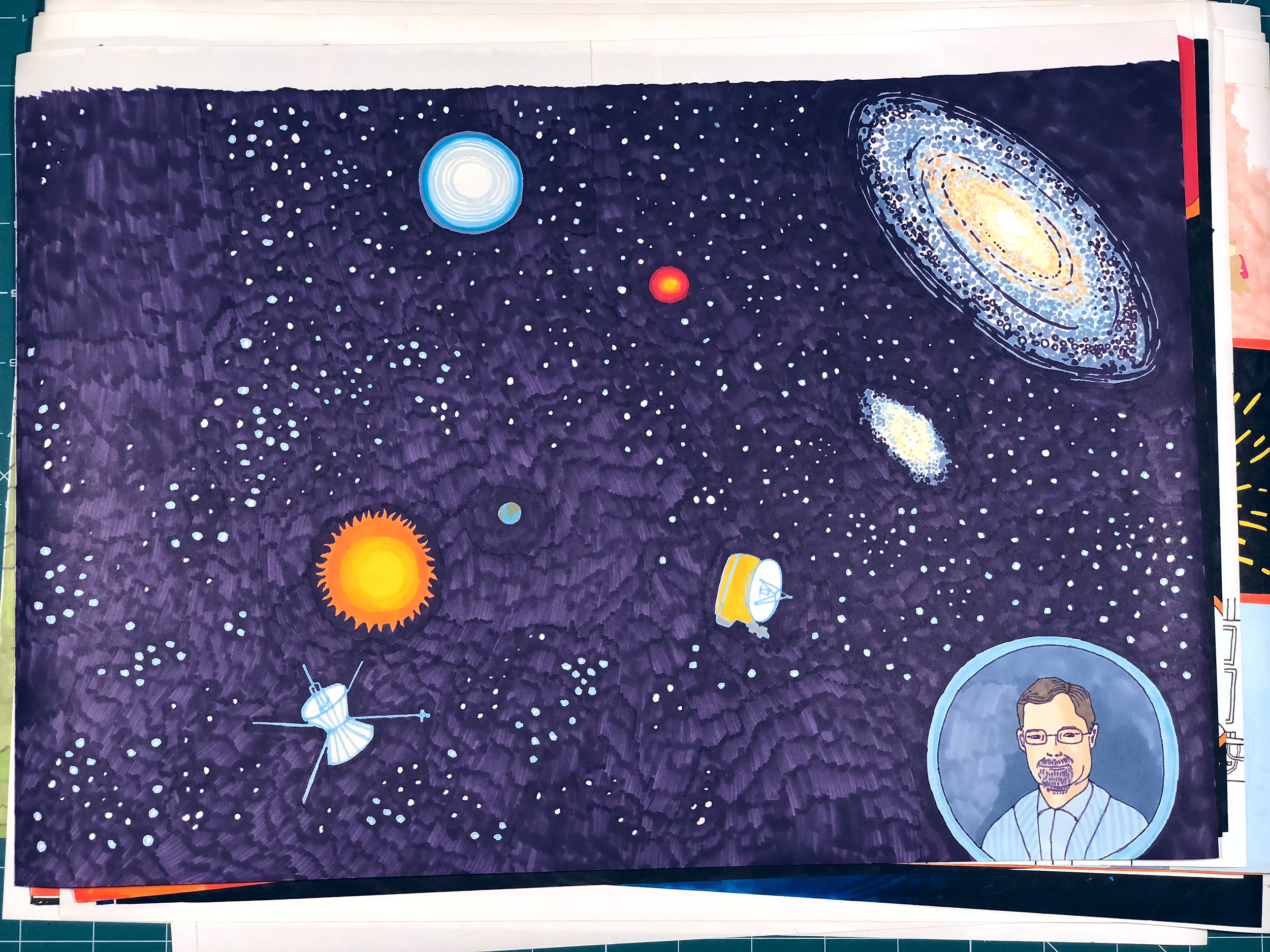Tu jesteśmy
English title: We Are Here
First edition:
Publisher: Znak
Kraków, 2011
ISBN 978-83-240-1748-5
Second (current) edition:
Publisher: Wydawnictwo Dwie Siostry
Warsaw, 2018
ISBN: 978-83-65341-28-0
Dimensions: 20,5 × 27 cm
Hardcover 108 p.
All of the images below present the second edition of the book.
How do astronauts eat, sleep and wash? Where does the space junk come from? Can people inhabit other planets? How to establish contact with extraterrestrial civilization? An extraordinary book on space and human attempts to conquer it. Hand-drawn illustrations and short, informative captions introduce readers to the world of space research, missions and discoveries. Each spread brings a new portion of intriguing knowledge conveyed in an attractive and accessible way, but not oversimplified. For inquisitive children and dreamers who love to look at the stars.
“Tu jesteśmy” was inspired by the Jill Tarter TED talk and Carl Sagan famous pale blue dot quote. The first sequence of images in the book (starting with the cover, end paper, and two spreads that replaced the traditional title pages) is taken almost directly from Tarter’s talk.
The idea was to show the modern exploration of the space. Usually this kind of books show Apollo missions, walking on the Moon and all those amazing achievements that promised us holidays on Mars. But those moments were decades ago and even though the race to space cooled a little bit, humanity is still pushing forward.
This book is uses Urbana Light for body text and side notes, Urbana Bold and Urbana Black Italic for headers, and Providence Sans Bold for speech bubbles.
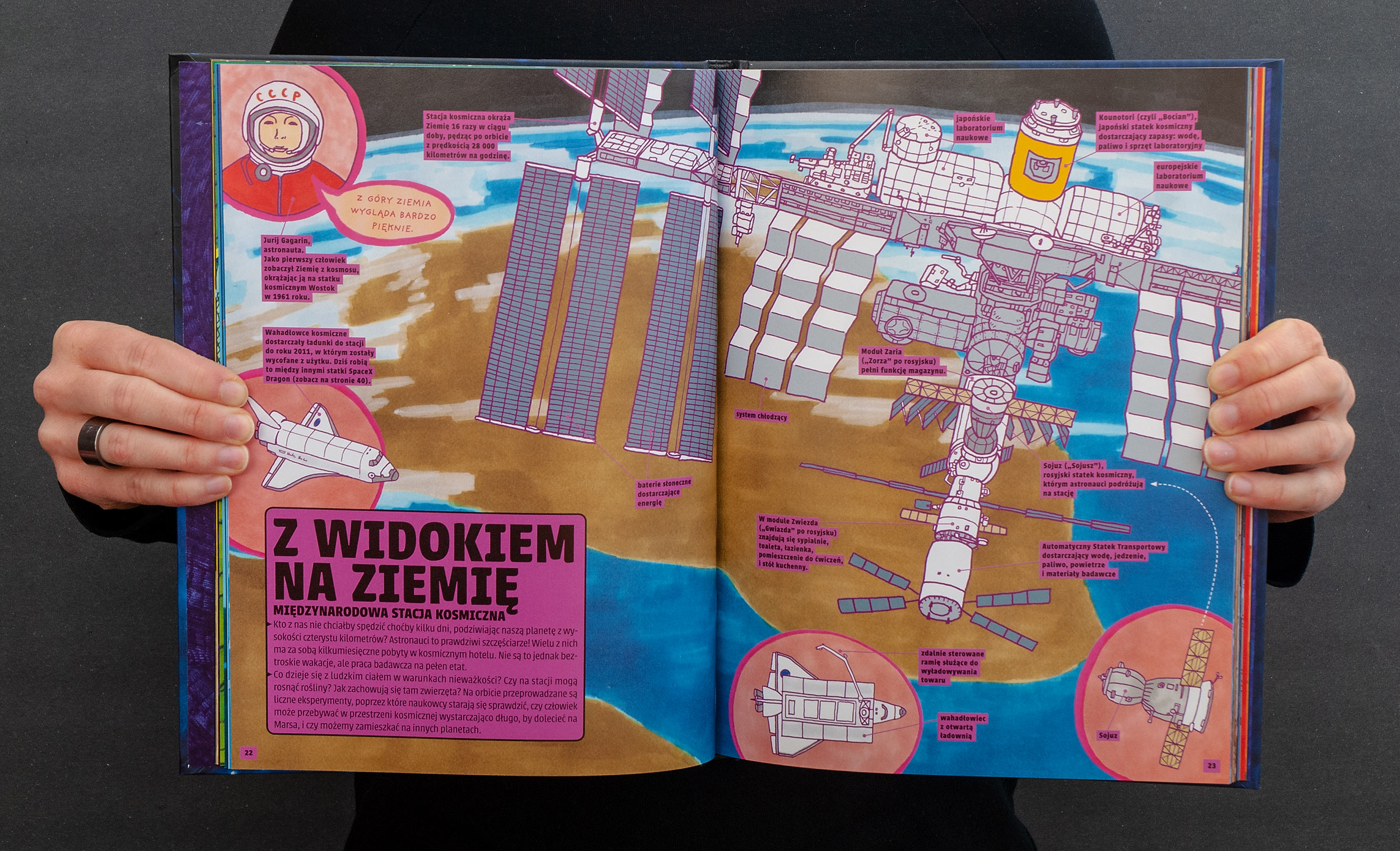
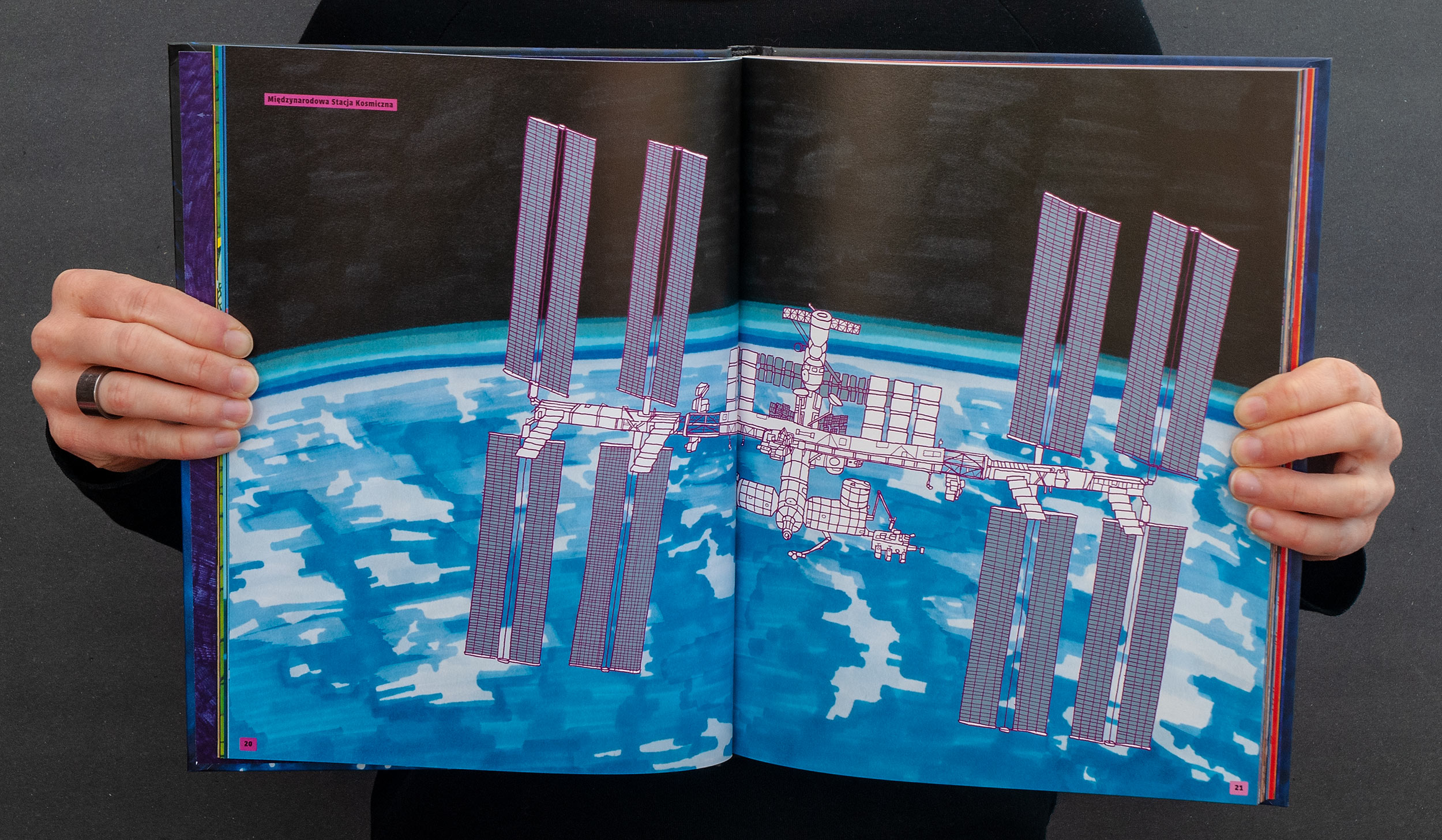
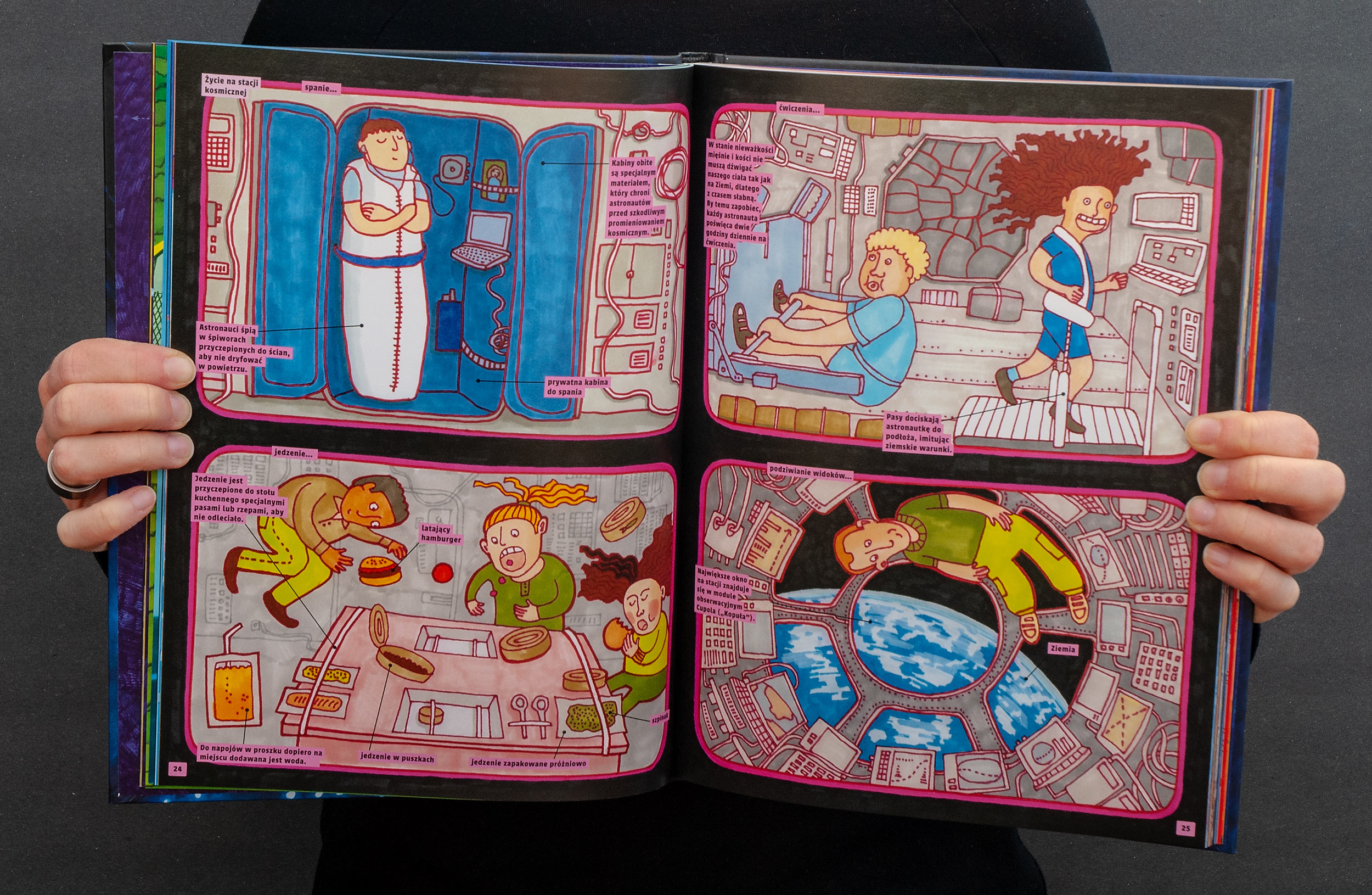
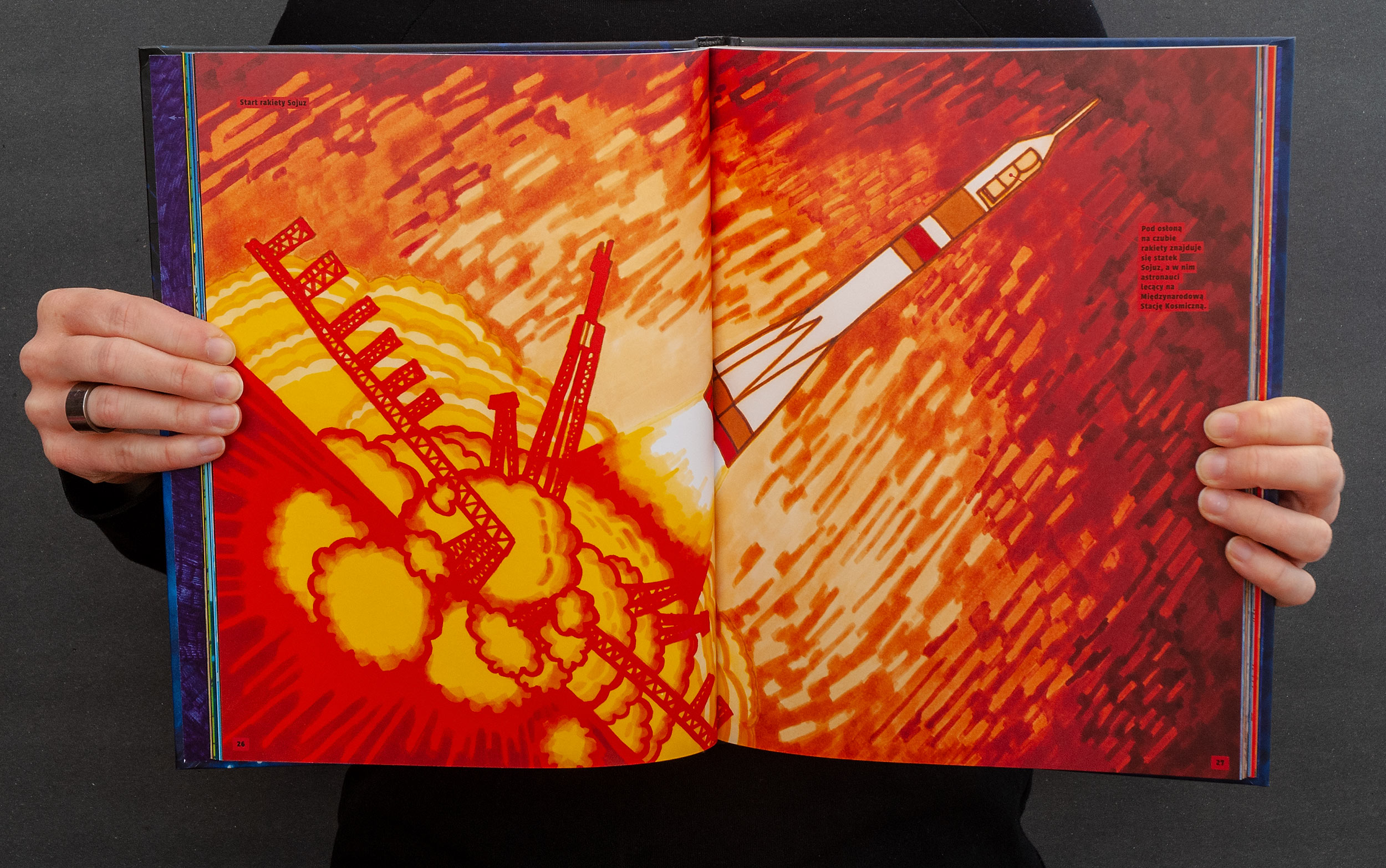
Working for two publishers
This book was created very early in our career. It was a moment were we couldn’t make a living just by designing our own books. Back then, Wydawnictwo Dwie Siostry didn’t publish enough books per year to print everything we were able to produce. This is why, even though we had a few projects for Wydawnictwo Dwie Siostry in the pipeline, we were working with other publishing houses simultaneously.
In 2010 Znak has already published one of our books (“Who eats whom”) and we were extremely conscious about how to approach creating titles for two different and on some levels competitive entities. Those projects needed to be distinctively different from each other.
After a few years we had some bestsellers under our belt. This was possible thanks to rapid growth of Wydawnictwo Dwie Siostry and their extraordinary ability to sell publishing rights to many foreign publishers. Collaboration with Znak wasn’t that fruitful so we decided not to extend our agreements with them and sign new contracts for titles created for Znak with Dwie Siostry. Znak felt that our books were not commercially viable so they were happy to let us go.
In 2018 Dwie Siostry published a new updated and revised edition of “Tu jesteśmy” with two spreads about Space X.

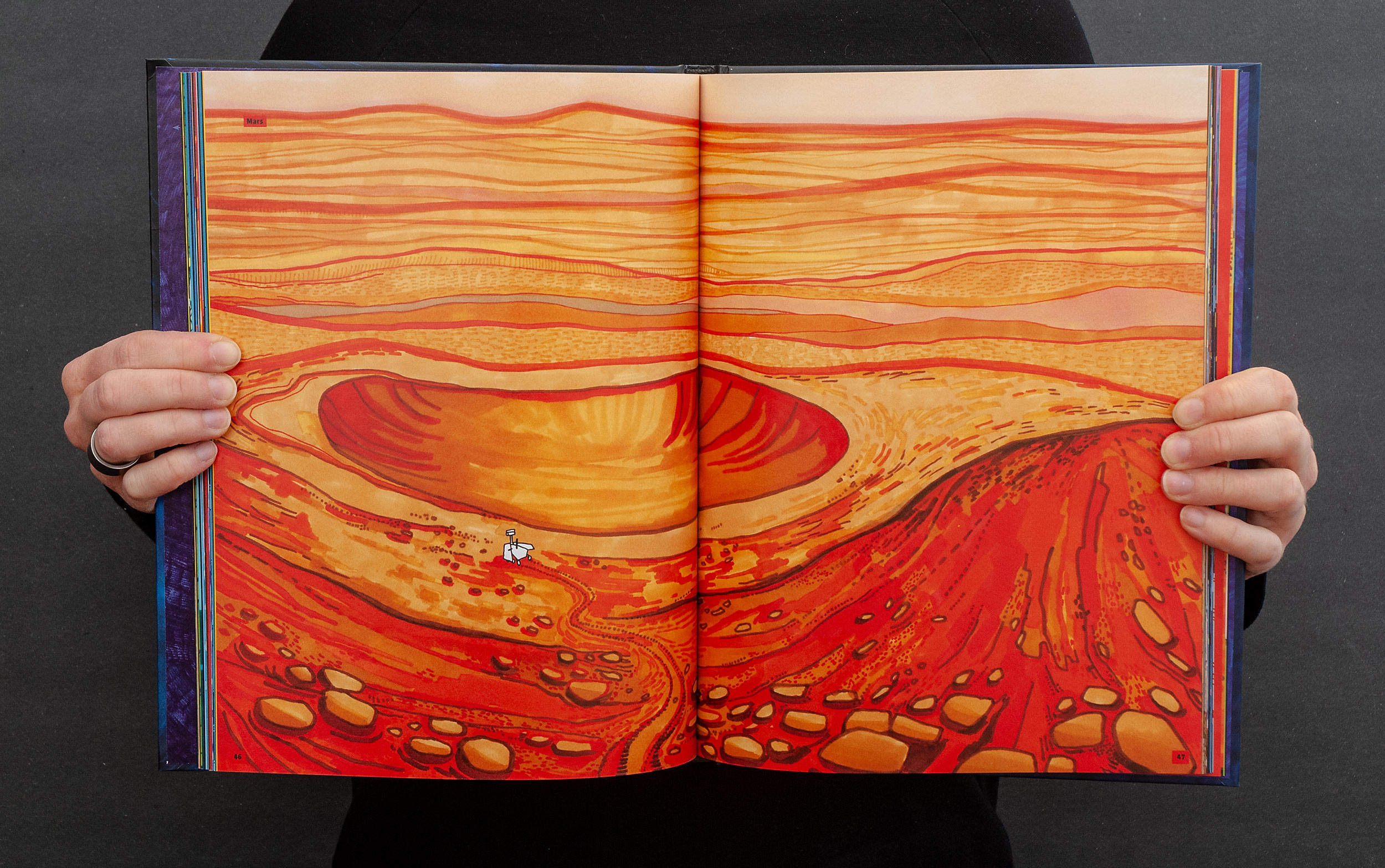

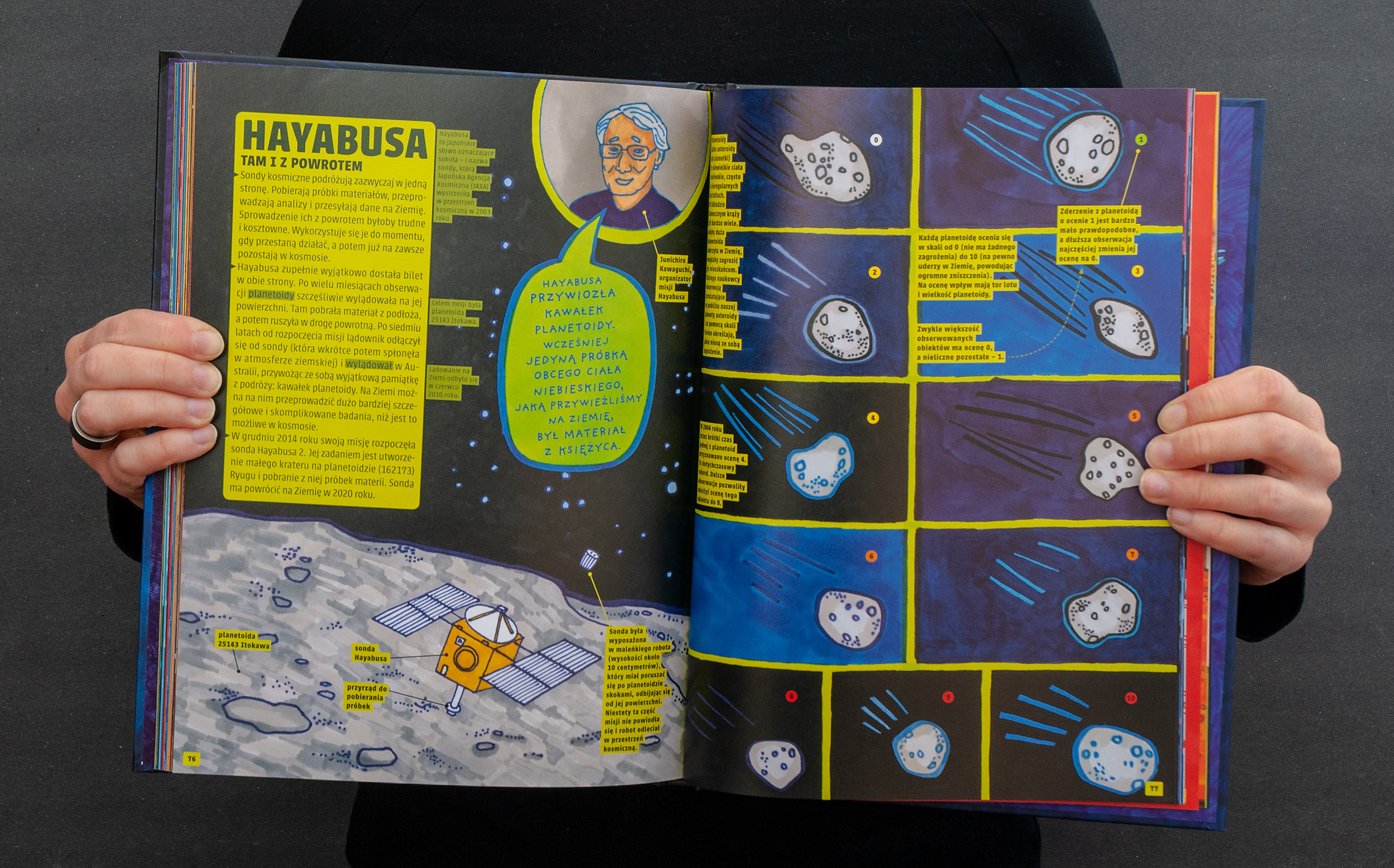
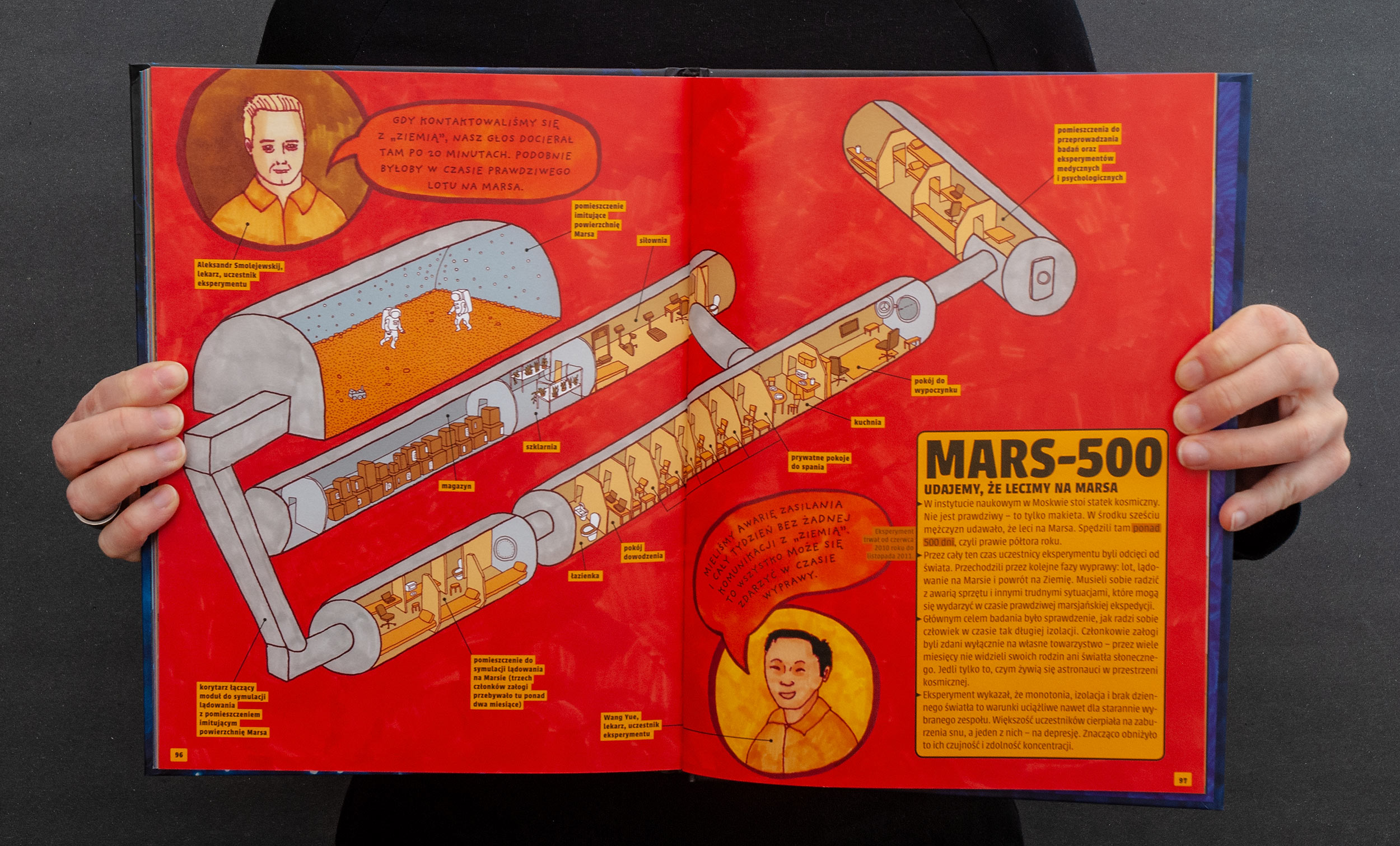
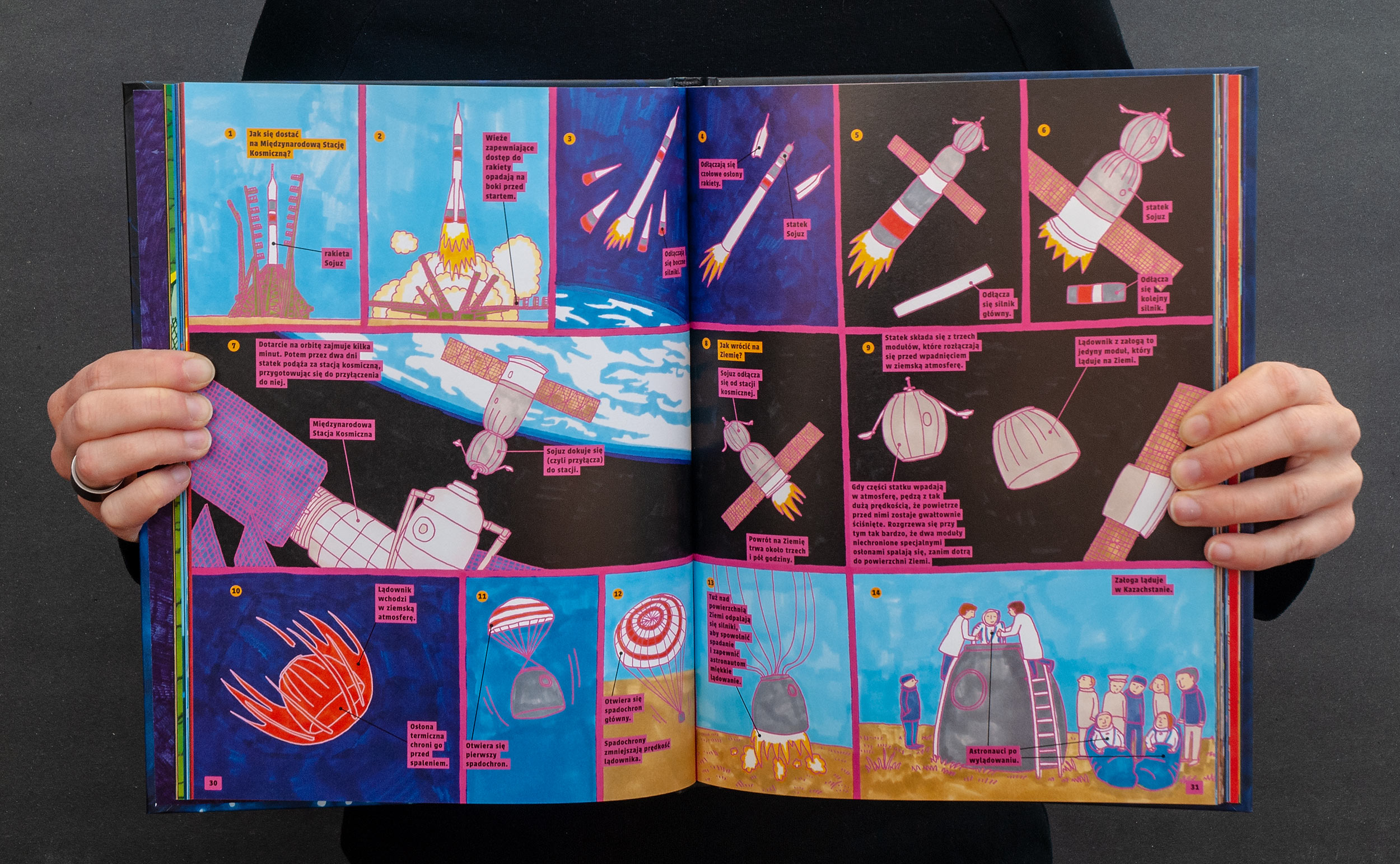
No mistakes?
The most important part of every non-fiction book is getting your facts right. We’re not physicists so we needed help. Magdalena Zielińska who was the editor of the first edition gave us a contact to Nikodem Frodyma from Jagiellonian University who was a big help. After finishing the book Nikodem received a pdf file with all of the spreads and he added two types of comments. In read he marked mistakes, errors and just simply incorrect informations. In green he was pointing to words or sentences that were correct but needed more clarification or could use different phrasing. We incorporated both type of suggestions.
As usually we had some minor mistakes but one page was a total mess and we had to rewrite it from the scratch.
Before the 2018 edition editor Maciej Byliniak did a huge work and not only updated all of the informations (for example witch missions have ended and when and how they ended) but also found a lot of mistakes and ambiguity that needed correction.
New tools
It was our priority to find a different illustrating style for books published in Znak. This is why “Tu jesteśmy” was our first book with colors that where not added in Photoshop. Every spread is hand drawn using water-based Letraset Tria markers. What you see in the book is almost identical to what was drawn on the paper. On rare occasions some colors were adjusted and few elements moved. Sometimes we drew strokes on a separate paper just because black liners were more precise and we were able to change their color in Photoshop.
This was also our only book to which we’ve made paper notes. We always make sketches of the composition and page layout but this time we had two notebooks full of notes. Nowadays, we do all our notes in a Google Doc.
Building a habitat
We don’t do workshops for kids anymore, but for special occasions we have a few scenarios that usually work out pretty well. For “Tu jesteśmy” we developed a workshop in which kids design and build a first base on Mars. The base is usually constructed out of huge carton boxes and a lot of chrome adhesive foil. Participants can enter the base and design the interior too. They enjoy very much that most of the time adults cannot enter the final structure.
Foreign editions
Serbian, овде смо, Козикас издаваштво, 2019, ISBN: 978-86-6028-009-3
Slovak, Tu žijeme, Slovart, 2019, ISBN: 978-80-556-4250-5
Japanese, 地球から宇宙をめざせ!, Tokuma Shoten Publishing Co, 2019, ISBN: 978-4-19-864875-6
Spanish, Tú estás aquí, Maeva young, 2019, ISBN: 978-84-17708-04-7
Italian, Voi siete qui!, Mondadori Electa, 2016, ISBN: 978-88-0466-295-2
Chinese Simplified, 太空, Beijing Yuanliu Classic Culture Ltd., 2016, ISBN: 978-7-221-13550-6
Korean, 또 다른 지구를 찾아서, Pulbit Publishing Co., 2013, ISBN: 978-89-7474-180-8
Upcoming foreign editions
Czech
You can find a Google Sheet with a list of all our foreign editions here.
Speeding neutrinos
Back in 2011 we were very fond of Adobe Flash mini games, promotional sites and interactive music videos. We stopped taking commissions for websites but we still loved (and love to this day) programming, so we decided to create a mini game for “Tu jesteśmy”.
Right about the time “Tu jesteśmy” hit the bookstores, CERN published a controversial scientific research. It stated that neutrinos could move faster than the speed of light. This would not only contradict things that were written in our book but also change physics as we know it. Our mini game was about testing this theory.
The website was made in Adobe Flash so it’s dead now.























